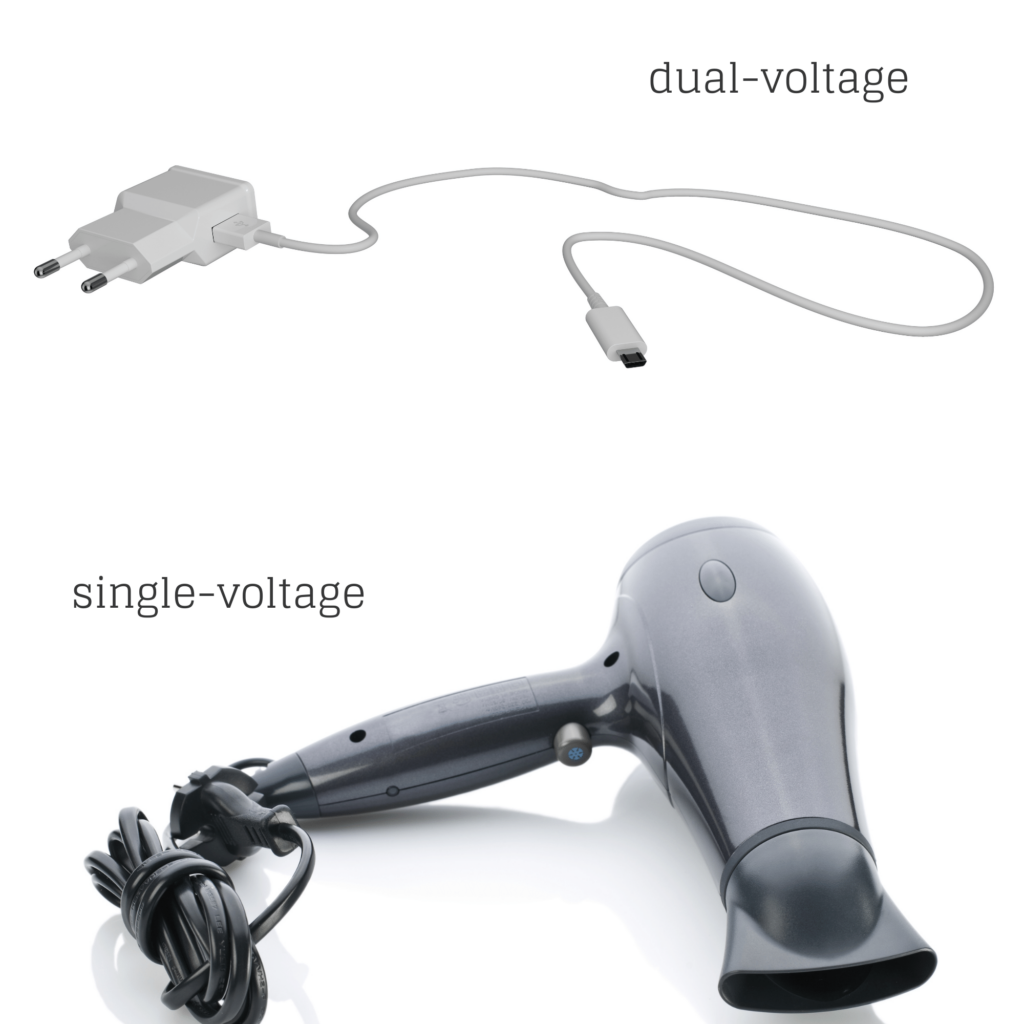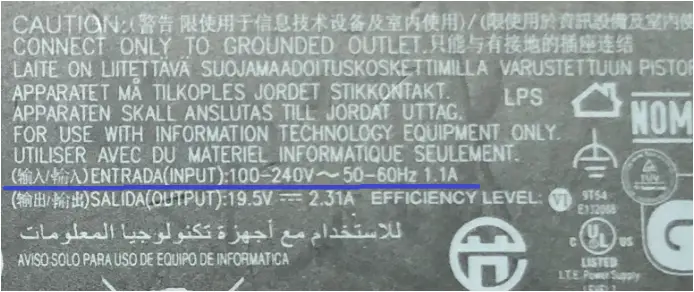30-second summary
Dual voltage
The American continent uses a voltage of 110 to 120 volts (AC) while Europe, Asia and Africa use 220 to 240 volts (AC).
A dual voltage device can accept both 110-120V and 220-240V. Cell phones, tablets, and laptops are typically dual voltage devices, while hair dryers, mixers, and curling irons are typical single voltage devices.

110V vs. 220V – Where and Why
The difference is that the higher the voltage, the more power can be available with the same amperage as with a low voltage. The equation is as follows: Power = Voltage x Current. When 220V wiring is used, less current is required than with 110V wiring. This is the main advantage of 220V. Moreover, 220V is less wasteful. DC power conversion requires less heat at this voltage because there are fewer amps to do the same work.
On the other hand, 110V is considered safer if you get shocked by it, due to the fact that your body has a greater chance of resisting the shock at this voltage. It’s true that all things being equal amps are more dangerous than volts as far as killing you goes, but 220V has a greater chance of pushing those amps into your body than 110V does. Although it’s true that 220V requires less current to provide the same amount of power, 110V can still carry a relatively high current and poses a higher risk of serious injury.
The American continent uses a voltage of 110 to 120 volts (AC) while Europe, Asia and Africa use 220 to 240 volts (AC). If you’re a frequent traveler, you need to understand how the different voltage increments can affect your devices. However, most travel electronics are rated for dual voltage use and wouldn’t require a converter. When the voltage reading is listed as a range of numbers, like 110V–220V or 100-240V and 50 – 60 Hz, the device can handle AC voltage outlets from all over the world. This is considered a “dual-voltage” or “worldwide voltage” device.
When you’re traveling with dual voltage devices, all you’ll need to pack is your travel adapter.
Cell phones, tablets, and laptops are typically dual voltage devices, while hair dryers, mixers, and curling irons are typical single voltage devices.

Frequently asked questions
Low voltage is an electrical voltage that is referred to in the consumer segment as the main voltage used for commercial electrical appliances and lighting in homes and industry. Electrical voltages that do not exceed the specified limit values are referred to as low voltage. According to the ANSI C84.1-2020: low voltage is between 240 to 600 V. According to the IEC: low voltage is the voltage between 50 – 1,000 volts of alternating current and between 120 – 1,500 V of direct current.
110V is considered safer if you get shocked by it, due to the fact that your body has a greater chance of resisting the shock at this voltage. It’s true that all things being equal amps are more dangerous than volts as far as killing you goes, but 220V has a greater chance of pushing those amps into your body than 110V does. On the other hand 220V is less wasteful. DC power conversion requires less heat at this voltage because there are fewer amps to do the same work.
Cell phones, tablets, and laptops are typically dual voltage devices, while hair dryers, mixers, and curling irons are typical single voltage devices.

